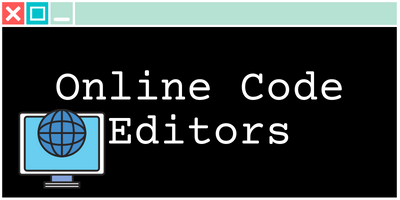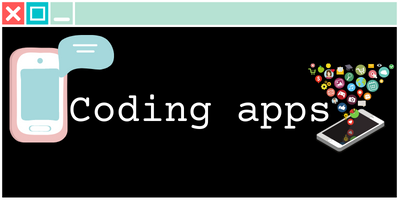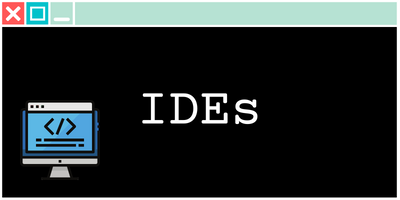Big Data Cheat Sheet: A Comprehensive Guide
Big data is a critical tool for businesses looking to gain insights into their operations, customers, and market trends. However, working with large amounts of data can be a daunting task, requiring specialized tools and expertise. To help you navigate the world of big data, we’ve created a cheat sheet that covers the key concepts and tools you need to know.
Whether you’re a data analyst, a developer, or a business executive, our cheat sheet has something for you. We cover the basics of big data, including what it is, how it’s stored and processed, and what the main challenges are. We also delve into the technical details, explaining the most common tools and frameworks used to work with big data, such as Hadoop, Spark, and Kafka.
But our cheat sheet goes beyond the basics, too. We provide tips and tricks for optimizing your big data workflows, such as how to choose the right data storage and processing technologies, how to manage data pipelines, and how to scale your infrastructure. We also cover advanced topics, such as machine learning and artificial intelligence, and how they can be applied to big data.
With our cheat sheet, you’ll have a comprehensive guide to big data at your fingertips. No matter what your level of experience is, our cheat sheet will help you become a better big data practitioner, giving you the tools and knowledge you need to turn data into insights and insights into action.
What is Big Data?
Big data refers to large sets of data that are too complex to be processed by traditional data processing methods. It includes structured, semi-structured, and unstructured data that can be analyzed for insights and used to make informed decisions. Big data can come from a variety of sources, including social media, customer interactions, and machine-generated data.
Why is Big Data Important?
Big data is important because it can help organizations make informed decisions. By analyzing large sets of data, organizations can identify trends, patterns, and relationships that they may not have been able to see otherwise. This can help organizations improve their products and services, streamline their operations, and make better decisions overall.
How to Collect Big Data?
There are many ways to collect big data, depending on the source and type of data. Some common methods include:
Web scraping
This involves extracting data from websites and web pages.
Social media monitoring
This involves tracking mentions of your brand on social media platforms.
Surveys
This involves collecting data directly from customers through surveys and questionnaires.
Sensor data
This involves collecting data from sensors and IoT devices.
Transactional data
This involves collecting data from transactions, such as purchases or financial transactions.
How to Analyze Big Data?
Analyzing big data can be a complex process, but there are several tools and techniques that can help. Some common methods include:
Machine learning
This involves using algorithms to analyze data and make predictions.
Data visualization
This involves creating visual representations of data to help identify patterns and trends.
Natural language processing
This involves analyzing unstructured data, such as text, to identify patterns and sentiments.
Statistical analysis
This involves using statistical models to identify patterns and relationships in data.
Data mining
This involves identifying patterns and trends in data using algorithms.
Types of Big Data
There are three main types of big data: structured, semi-structured, and unstructured data.
Structured data
This is data that is organized and can be easily processed using traditional data processing methods. It is often stored in a database or spreadsheet and can be easily searched and analyzed.
Semi-structured data
This is data that is partially organized, such as XML or JSON files. It can be analyzed using traditional data processing methods, but may require additional processing to extract insights.
Unstructured data
This is data that is not organized, such as text or image files. It cannot be easily analyzed using traditional data processing methods and may require advanced techniques, such as natural language processing or computer vision, to extract insights.
Tools for Working with Big Data
Working with big data requires specialized tools and technologies. Some common tools and technologies used in big data include:
Hadoop
This is an open-source software framework used for distributed storage and processing of big data.
Spark
This is an open-source data processing engine used for processing large datasets.
NoSQL databases
These are non-relational databases used for storing and retrieving large amounts of unstructured data.
Elasticsearch
This is an open-source search and analytics engine used for indexing and searching large datasets.
Tableau
This is a data visualization tool used for creating interactive and informative visualizations of large datasets.
Apache Kafka
This is an open-source distributed streaming platform used for building real-time data pipelines and streaming applications.
Tips for Managing Big Data
Managing big data can be a daunting task, but there are several tips that can help:
-
Define your goals and objectives: Before working with big data, it’s important to define your goals and objectives.
-
Start small and scale up: It’s often easier to start with a small dataset and scale up as needed.
-
Use the right tools: Choose the right tools and technologies for your organization’s needs.
-
Optimize data storage and processing: Optimize your data storage and processing for maximum efficiency.
-
Ensure data quality: Ensure that your data is accurate and of high quality.
-
Ensure data security: Big data can contain sensitive information, so it’s important to ensure that it’s secure.
More ressources
Here’s a list of some useful resources if you want to dig deeper into the world of big data:
- Apache Hadoop – an open-source framework for distributed storage and processing of large data sets. (https://hadoop.apache.org/)
- Apache Spark – a fast and general-purpose cluster computing system that supports in-memory data processing. (https://spark.apache.org/)
- Apache Kafka – a distributed streaming platform that allows you to publish and subscribe to data streams in real-time. (https://kafka.apache.org/)
- Google Cloud Big Data – a suite of services that allows you to store, process, and analyze large datasets on Google Cloud Platform. (https://cloud.google.com/big-data)
- Microsoft Azure Big Data – a collection of services that allows you to store, process, and analyze large datasets on Microsoft Azure. (https://azure.microsoft.com/en-us/solutions/big-data/)
- Data Science Central – an online resource for data science and big data professionals. (https://www.datasciencecentral.com/)
- KDnuggets – a leading online resource for big data and data science news, tutorials, and discussions. (https://www.kdnuggets.com/)
- O’Reilly – a publisher of books, courses, and conferences focused on data science, big data, and artificial intelligence. (https://www.oreilly.com/)
- Coursera – an online learning platform that offers courses and specializations in data science, big data, and related topics. (https://www.coursera.org/)
- DataCamp – an online learning platform that offers courses and projects in data science, big data, and related topics. (https://www.datacamp.com/)
These resources should give readers a good starting point for learning more about big data and related topics.
Conclusion
In conclusion, big data is a powerful tool that has the potential to transform the way businesses operate and make decisions. But to unlock its full potential, you need to have a deep understanding of the concepts, tools, and techniques involved.
Our cheat sheet is designed to help you do just that. We’ve covered the basics of big data, as well as the most common tools and frameworks used in the industry. We’ve also provided practical tips and tricks for optimizing your big data workflows, as well as delving into advanced topics such as machine learning and artificial intelligence.
Tools I use for this site
- I buy all my domain names on Namecheap, as thetrendycoder.com
- The hosting of this website is made on Bluehost.
- The website is created with WordPress.org (and not WordPress.com).
- I use the page builder Elementor because it makes it easy to create modern pages with drag and drop.
- I have multiple websites, and on most of them, I use themes from wpKoi. I love their design, they are very original and work well with Elementor.
- All the designs and images are created using canvas.
- I use Grammarly and languagetool to correct all my spelling and grammar mistakes.
- SEO is a big thing on a website, I use a WordPress plugin called YoastSEO to help me with the basic analysis. I also use a tool called Keysearch for choosing the right keywords.
- To handle affiliate links, I use two platforms: impact and ShareASale.
You want to write on TheTrendyCoder ?
If you are interested in publishing guest articles on this website, sharing your experience or coding tutorials, apply through this form.
NO EXPERIENCE needed!
NO PERFECT English needed!
NO DEGREE needed!
NO AGE limits!
No matter at what stage we are in our tech journey, we all have learned things and experienced things. Sharing them can help others and even help us. So, if you are a student, a professional, or a self-taught coder, feel at home and share some of your knowledge with the community.








